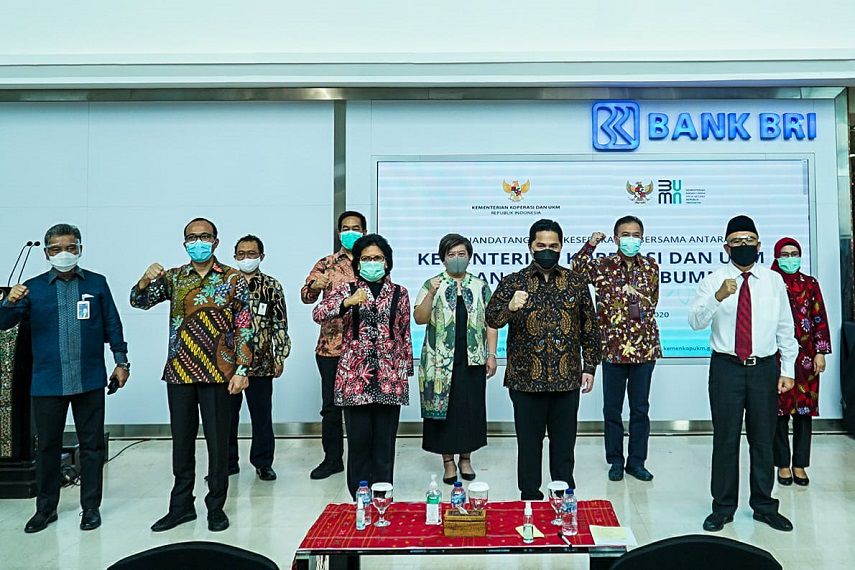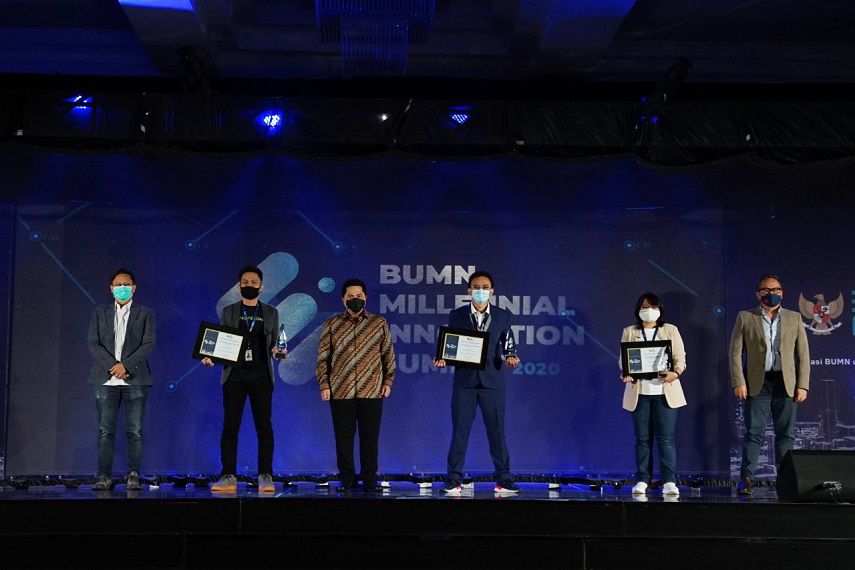Kapanlagi.com - In the business world, we are familiar with the term BUMN company. As we know, BUMN stands for State-Owned Enterprises. This means that the ownership status of BUMN-labeled companies is under the state. This is also the main and commonly known characteristic of BUMN.
Through state-owned enterprises, the country operates businesses to serve and meet the needs of the community. BUMN-labeled companies exist in various fields, such as transportation, banking, telecommunications, and so on. BUMN companies are certainly different from private companies in general. To understand this, you can see the characteristics of BUMN.
Now, as reported by liputan6.com, here are some characteristics of BUMN and other explanations about State-Owned Enterprises.
1. Characteristics of BUMN

(credit: bumn.go.id/via dream.co.id)
State-Owned Enterprises or BUMN are companies whose ownership status is under the government. This makes BUMN companies have characteristics or traits that distinguish them from ordinary companies. The characteristics of BUMN are as follows.
1. Becoming a Source of State Revenue
BUMN companies are one of the sources of state revenue. In fact, it can be said that BUMN is the main source of income. Income from BUMN is obtained from providing goods or services needed by the community.
In addition, it turns out that BUMN companies not only provide income for the country. This is because the operation of BUMN companies also contributes to keeping the economy running.
2. Fully Controlled by the Government
As mentioned earlier, one of the most common characteristics of BUMN is its ownership status. BUMN is fully controlled by the government or the state. This means that every activity of BUMN is controlled and supervised by the government. In practice, BUMN companies are under the authority of the Ministry of State-Owned Enterprises.
Regarding the ownership status of BUMN, it is also directly explained in Law number 19 of 2003 Article 1. The Law states that BUMN is a business entity whose entire or majority capital is owned by the state through direct participation derived from state wealth.
3. Risks are Borne by the Government
Because it is fully controlled by the government and is the main source of income, BUMN's profits and losses are also borne by the state. Therefore, BUMN is a company whose responsibility and rights are fully in the hands of the government. Including all economic activities of the company that are constantly monitored and determined by the government.
4. Shares Can Be Owned by the Public
The fourth characteristic of state-owned enterprises is that shares can be owned by the public. Yes, even though ownership is in the hands of the state or government, it turns out that the public can also own shares of state-owned enterprises. However, the ownership of shares by external parties or the public in state-owned enterprises cannot exceed 50% of the total shares owned by state-owned enterprises.
5. Products or Services According to the Needs of the Public
State-owned enterprises, like other companies, produce goods or services that are in accordance with the needs of the public. Therefore, there are many types of state-owned enterprises. State-owned enterprises exist in almost every field of public needs, such as telecommunications, transportation, banking, and so on. This is intended to fulfill the needs of the public.
6. Serving Public Interests
The sixth characteristic of state-owned enterprises is that they exist to serve public interests. Continuing from the fifth characteristic, the products and services of state-owned enterprises are indeed provided with the aim of meeting the needs and interests of the public, in this case, the society. This can be seen from various types of service provider companies that are very close and in line with public needs. For example, electricity, water, communication, and others.
2. Types of State-Owned Enterprises

(credit: bumn.go.id/via dream.co.id)
Broadly speaking, state-owned enterprises (BUMN) are divided into two types: Limited Liability Companies (Persero) and Public Companies (Perum). To understand the differences, let's take a brief look at the following explanation.
1. Limited Liability Companies (Persero)
Limited Liability Companies are companies whose capital is in the form of shares. As mentioned earlier, the majority of BUMN's shares are owned by the state. These state-owned enterprises are established with the aim of seeking profit. Currently, most BUMNs are in the form of limited liability companies. Examples include PT. Pos Indonesia, PT. PLN, PT. Telkom, Garuda Indonesia, and others.
2. Public Companies (Perum)
On the other hand, public companies are state-owned companies that serve the interests of the general public. Especially in the fields of production, distribution, and consumption. Examples include Perum Pegadaian, Perum Perumahan Umum Nasional (Perumnas), and others.
3. BUMN Fields and Examples
As mentioned earlier, BUMN has a wide range of scope. This state-owned company operates in various fields. Here are some fields in BUMN along with examples of the companies.
1. Banking: PT Bank Negara Indonesia, Tbk (BNI), PT Bank Rakyat Indonesia, Tbk (BRI), PT Bank Tabungan Negara (BTN), PT Bank Mandiri Tbk.
2. Insurance: PT Asuransi Jasa Raharja, PT Asuransi Jiwasraya, PT Jamsostek, PT Taspen.
3. Ports: PT Pelabuhan Indonesia I, PT Pelabuhan Indonesia II (PELINDO II), PT Pelabuhan Indonesia III, PT Pelabuhan Indonesia IV.
4. Shipping: PT Pelayaran Nasional Indonesia (PELNI).
5. Airports: PT Angkasa Pura.
6. Land Transportation: Perum DAMRI, PT Kereta Api Indonesia.
7. Logistics: Perum Bulog, PT Pos Indonesia.
8. Pharmaceutical Industry: PT Bio Farma, PT Indofarma Tbk, PT Kimia Farma Tbk.
9. Aviation Business: PT Garuda Indonesia.
10. Plantation: PT Perkebunan Nusantara (PTPN).
Those are some of the descriptions of BUMN characteristics, along with explanations of the types and fields and their examples. Hopefully, this is useful and adds to your knowledge.
(kpl/psp)
Disclaimer: This translation from Bahasa Indonesia to English has been generated by Artificial Intelligence.














